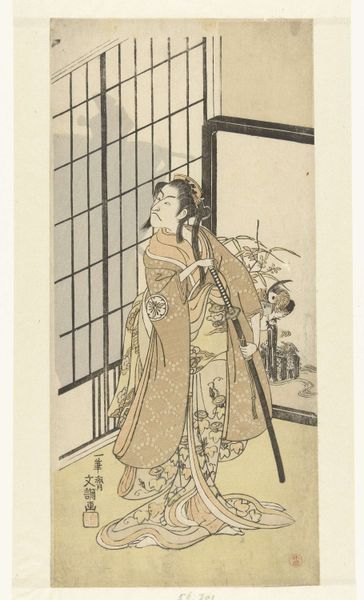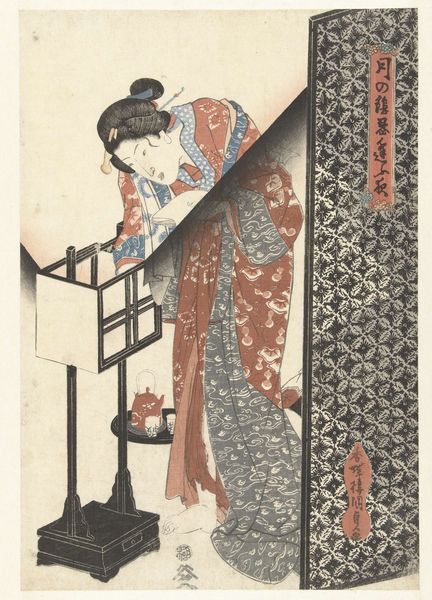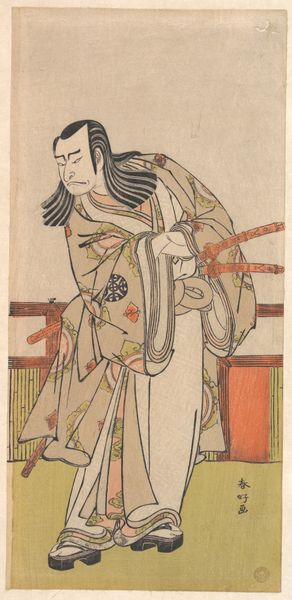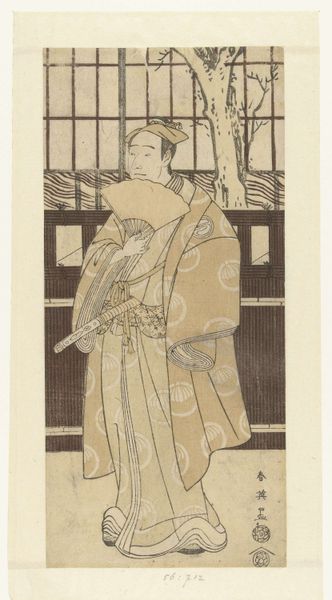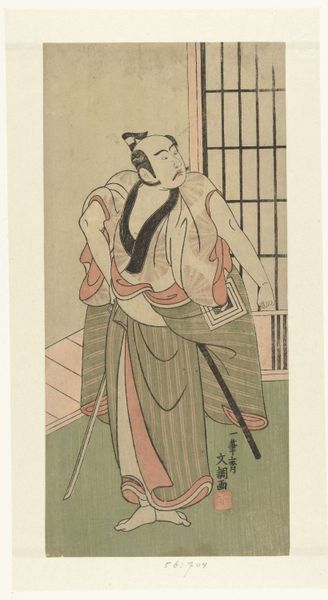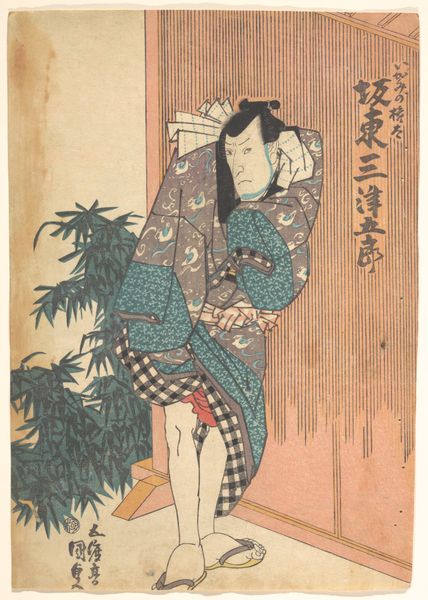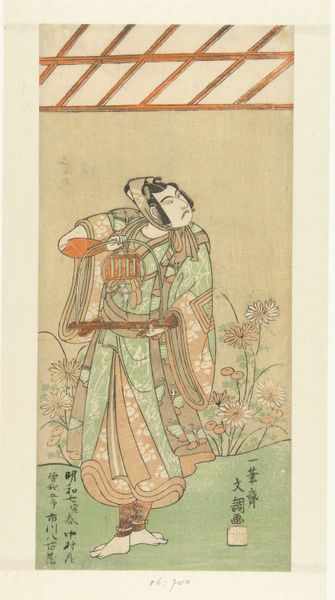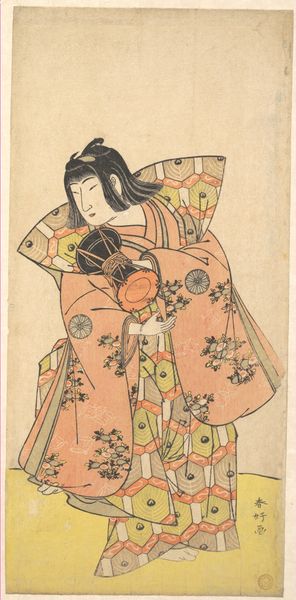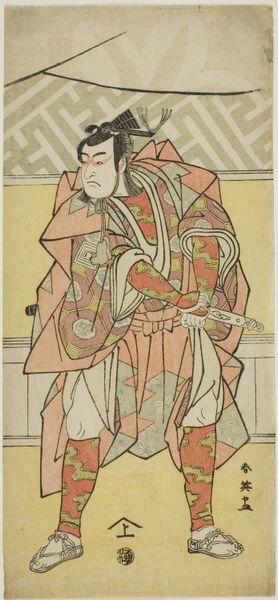
print, woodblock-print
#
portrait
#
narrative-art
# print
#
asian-art
#
ukiyo-e
#
woodblock-print
Dimensions: height 315 mm, width 146 mm
Copyright: Rijks Museum: Open Domain
Curator: Right in front of us, we see Ippitsusai Bunchō’s woodblock print entitled, "Acteur Matsumoto Koshiro III in de rol van Soga no Goro," created around 1769. Editor: What a potent expression of raw energy! The angled posture and gripping of the sword conveys contained yet volatile power. Curator: Precisely. This print comes to us from the Ukiyo-e tradition, offering us insight into the floating world and its players within the Edo period. We see more than just a portrait, it offers a cultural lens onto theatrical representation and performance as identity. The subject is not simply a man with a sword. Rather he embodies a specific role within Japanese theater. Editor: Theater! That's what immediately struck me. I'm drawn to how Bunchō captures that feeling. Notice how the visible structure hints at a theatrical backdrop, rather than a realistic setting. It lends this image an archetypal power; Soga no Goro seems less a historical individual and more the embodiment of righteous anger. The upward glance almost depicts fury itself. Curator: Righteous, perhaps…or shaped by complex social conditions! Theater, like all art, serves as a space where societal norms are reflected, but also critiqued. We might look at Soga no Goro, at Matsumoto Koshiro's portrayal, and think about contemporary expressions of male roles, heroism, and violent potential on stage today. Editor: Absolutely. Beyond contemporary resonance, this piece offers insights into the persistence of certain visual and gestural languages. The taut stance, the hard line of the mouth – these are recognizable, translatable markers. I think there's real emotive charge even for someone completely unfamiliar with kabuki. Curator: We also have to consider the function of prints within their social context; Bunchō wasn't just producing art for a select few. The relatively easy printing process enabled accessibility, bringing representations of cultural figures to the wider populace and thereby shaping how they were perceived, imitated, and possibly challenged. Editor: Ultimately this woodblock encapsulates how carefully constructed symbols are used. Bunchō and Matsumoto understood and exploited those signs expertly. It serves not merely as an image but, arguably, the visualization of contained masculine intensity, poised at an interesting cultural nexus. Curator: This brief encounter has truly highlighted how we actively make history present in ourselves by witnessing and processing our engagement with artworks. Editor: Yes. Reflecting on historical symbols can show us more of the contemporary narrative we exist within today.
Comments
No comments
Be the first to comment and join the conversation on the ultimate creative platform.
